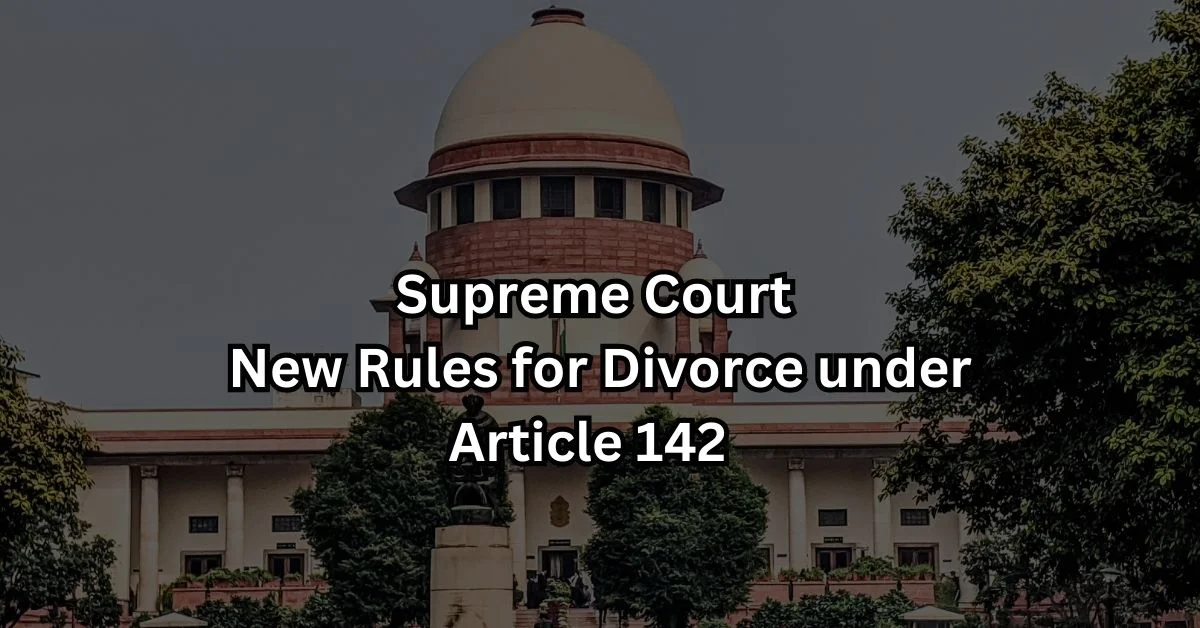In a recent ruling by the Supreme Court of India, a significant legal precedent has been set regarding the understanding of ‘cruelty’ in divorce cases underSection 13(1)(ia) of the Act of 1955. The verdict, delivered by Justices Sanjiv Khanna and M. M. Sundresh, sheds light on the evolving concept of cruelty in the context of matrimonial relationships.
Background of the Case
- Marriage and Troubles: The couple’s marriage started deteriorating after the birth of their child in 2006.
- Legal Complaint: The wife filed a complaint under Section 498A of the Indian Penal Code, 1860, and Sections 3 and 4 of the Dowry Prohibition Act, 1961.
- Allegations and Counterarguments: The husband questioned the wife’s character and alleged adultery. He also demanded a medical examination, which was denied by the High Court.
- Long Separation: The parties have been living separately for over a decade and a half.
Supreme Court’s Observations & Decision
- Hyper-Technical Approach: The Trial Court and the High Court applied an overly technical and pedantic approach in dealing with the divorce case.
- Mutual Allegations: Both the husband and wife made serious allegations against each other, indicating a lack of willingness to continue the marriage.
- Separate Lives: Both parties have moved on and established separate lives.
- Decision: Given the circumstances, the judgment of the Trial Court and the High Court is set aside, and the appeal is allowed, granting a decree of divorce.
Key Highlights of the Judgement
-
A Wide Interpretation of ‘Cruelty’
The judgment emphasizes that ‘cruelty’ is not a term that can be rigidly defined. Instead, it varies based on individual conduct, behavior, social strata, cultural norms, and the relationship dynamics of the parties involved. The court underscored that ‘cruelty’ must be viewed through the lens of human behavior, considering the societal milieu in which it occurs.
-
Changing Socioeconomic Realities
The judgment recognizes the changing landscape of modern life, which has brought about marked shifts in matrimonial duties and responsibilities. The court acknowledged that societal norms, economic conditions, cultural factors, and human values all influence what may be considered ‘cruelty’ in a given context.
-
Subjectivity and Objectivity in Cruelty
While ‘cruelty’ itself is an objective concept, the judgment highlights the element of subjectivity in its interpretation. What may be cruel to one person may not be so to another, and this subjectivity applies differently when a wife seeks divorce. The law, embodied in Section 13(1)(ia) of the Act of 1955, sets certain parameters for granting divorce, but it does not rely on a rigid standard.
-
The Socio-Economic Stigma
The judgment acknowledges the socio-economic stigma attached to women in the event of divorce or separation. It emphasizes the need for courts to adopt an empathetic and contextual approach, taking into account the social and economic realities and the background of the parties involved. Balancing the rights of both parties is a crucial aspect of this process.
-
Social Justice Adjudication
The concept of “social justice adjudication” is given due importance in the judgment. It calls for a departure from an adversarial approach and emphasizes the need for judges to be sensitive to the inequalities between the parties. Courts should lean towards the weaker party, particularly in cases involving maintenance rights, to prevent a miscarriage of justice.
-
Shifting Perspectives on Marriage
The judgment recognizes that the institution of marriage is not static and must adapt to changing societal needs. The court’s role is to understand the purpose of marriage in society and help it achieve its goals. Laws related to marriage and divorce should evolve with changing social realities.
-
Burden of Proof
In cases of divorce, the burden of proof lies with the petitioner. However, the judgment clarifies that the degree of probability required is not as high as in criminal cases but rather a preponderance of probability. It stresses that the standard of proof in matrimonial cases is different from criminal cases.
Conclusion
In summary, the interpretation of ‘cruelty’ in matrimonial cases is highly contextual and subjective, varying from case to case. The courts must consider the specific circumstances, social and economic realities, and the parties’ backgrounds while applying the concept of cruelty. Additionally, they should adopt a flexible and empathetic approach, recognizing the vulnerability of the weaker party and striving for socio-economic independence. The burden of proof in matrimonial cases is on the preponderance of probabilities, not beyond reasonable doubt, as in criminal cases.



